Web of Science
Journal Citation Reports
Link to the Journal Citation Reports database can be found on the upper bar of the Web of Science platform under Products. Preferably use the Open VPN connection to access WOS. To use Journal Citation Reports without VPN connection you may need to sign in with your user account. Click Register on the top right to create a user account.

This database enables to evaluate and compare international research journals based on their citation data. JCR also reflects the impact factor of the journals, which is the basis for sorting journals by their citability.
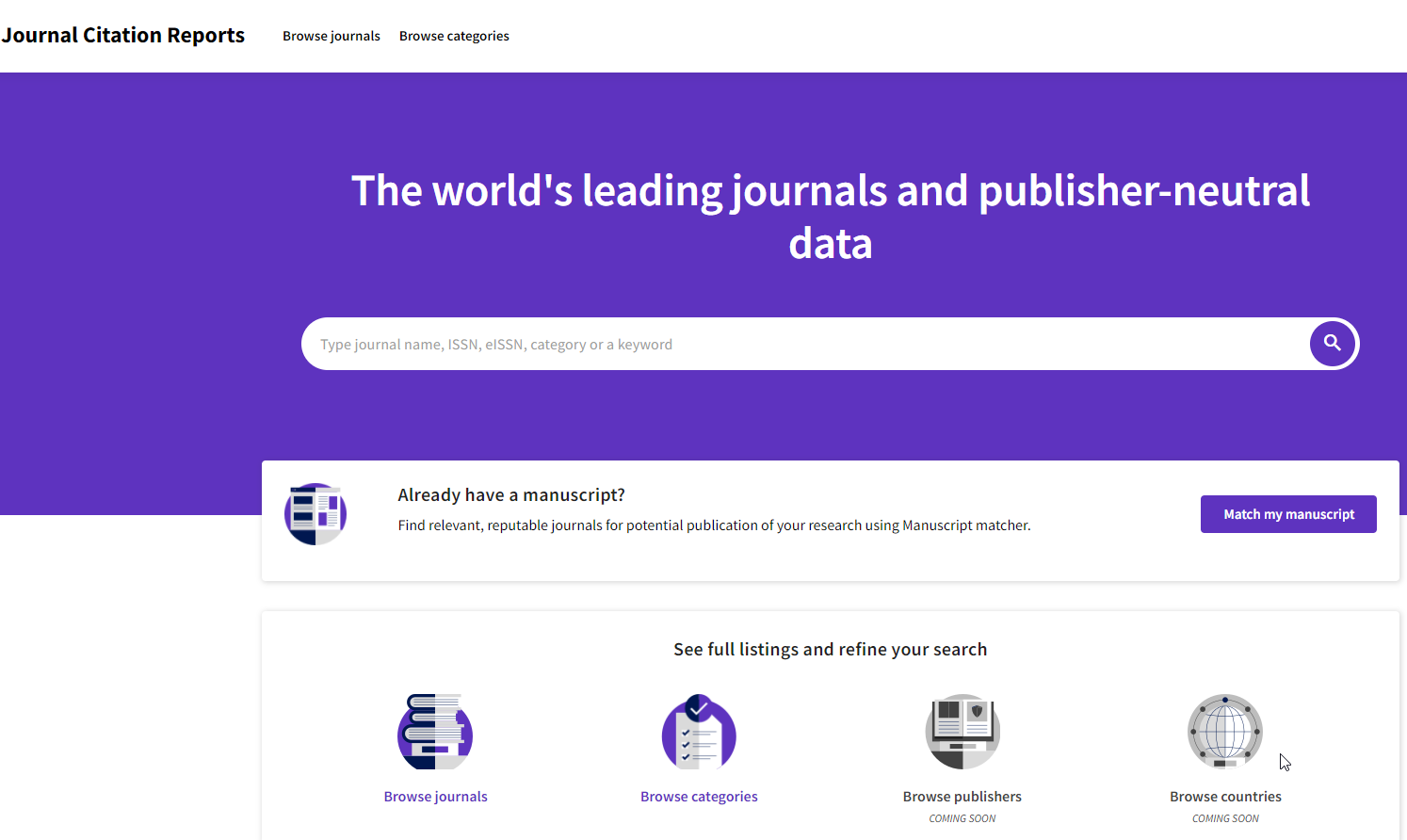
The series Science Edition and Social Science Edition are accessible in the database.
Selecting Browse Journals, the journals are sorted by their impact factor (Journals by Rank).
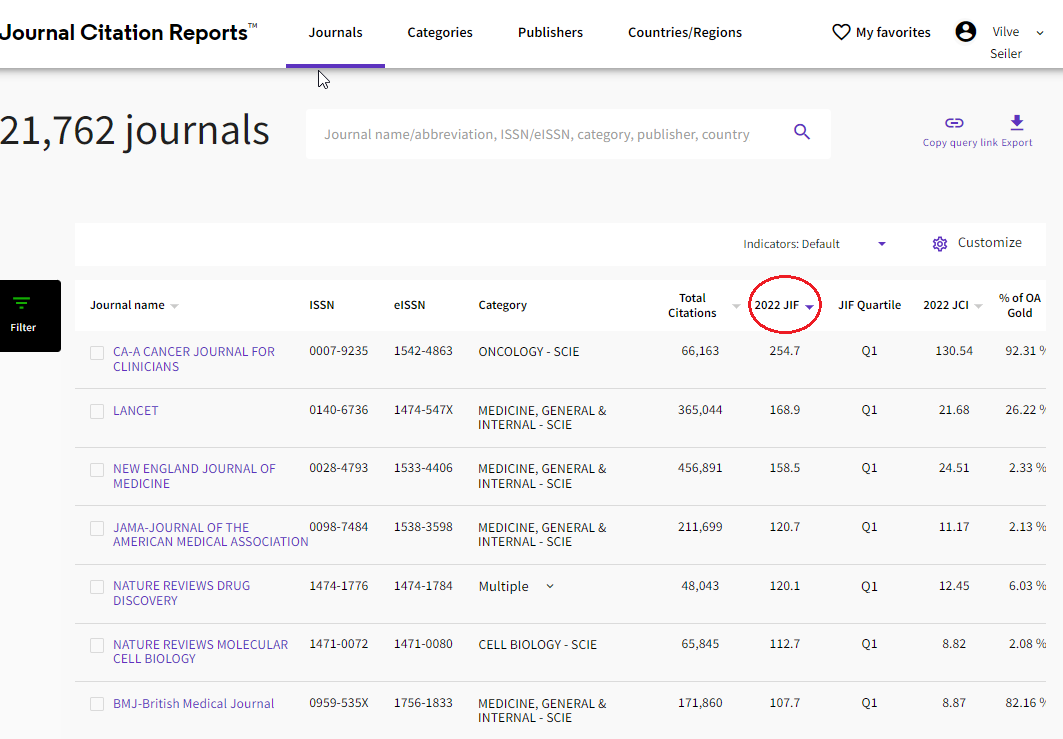
By clicking on Filters on the left different possibilities for finding information about the journals will open. Journals can be searched by their narrower field of research (Categories) or by the publisher or the country; you can search for a certain journal title or browse all titles. To submit your selection, click Apply on the bottom of the page. On the right the journals can be sorted by title, impact factor or other bibliometric indicators.
Browsing the journals of a research domain
Click Categories on the left-hand bar and select a suitable category or categories.
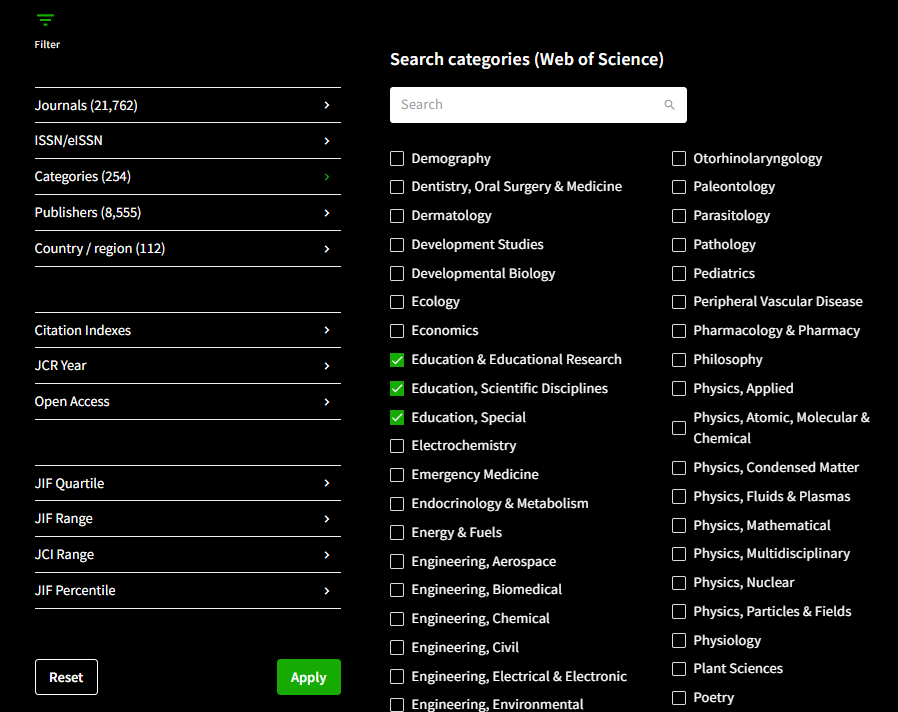
Confirm your selection by clicking Apply on the bottom of the page. The selected journals are displayed according to their impact factor, you can see the impact factor numbers in the column 2020JIF. Under Customize on the top right you can choose which indicators about the selected journals you wish to see on the table; for this you need to log into your WOS user account.
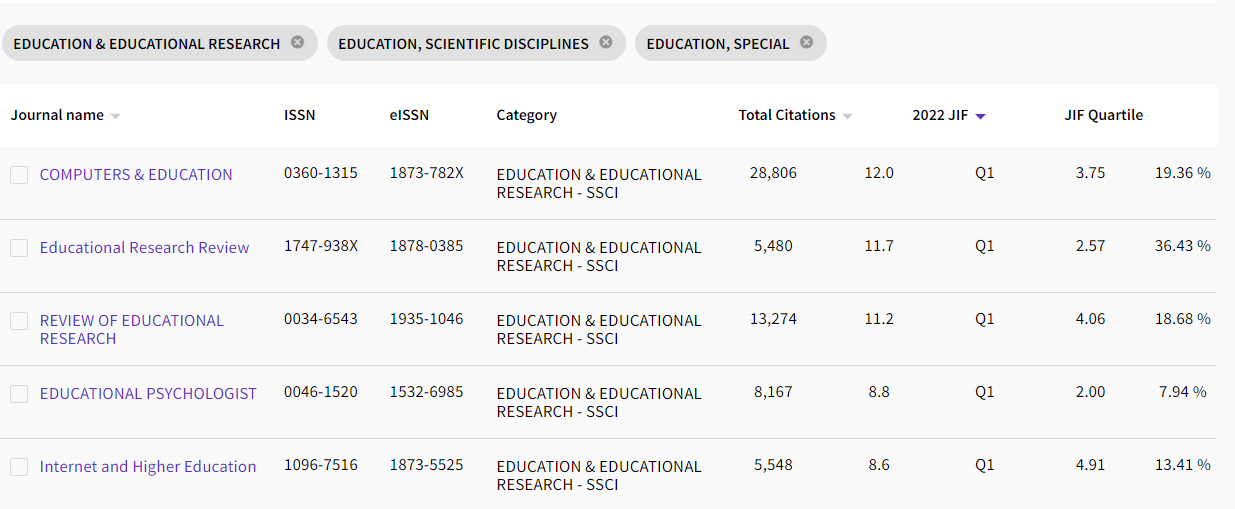
Impact Factor
The impact factor of a journal is calculated by examining the articles published in this journal during the two preceding years and the citations of these articles during the following year. The number of citations is divided by the total number of articles. The result shows the average number of citations to the articles published in this journal during the two preceding years.
By clicking on the title of the journal, you can see the full title and publication data of the journal, the calculation procedure of the impact factor, and additional information related to the citability of the journal.
In the domain of social sciences, the journal of the highest impact factor in 2020 was World Psychiatry. Its impact factor was calculated as follows:
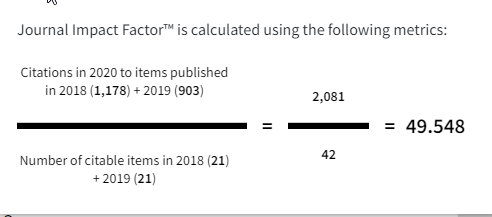
Immediacy Index indicates how quickly the articles published in some journal are cited after their publication.
Cited Half-Life indicates the average age of the majority of the articles published in this journal, which are cited in the year under observation, thus measuring the lasting value of these articles.
Review journals usually have the highest impact factor. The impact factor of journals differs much by their subjects. The impact factor of some top social sciences journal may be equal to that of some lower tier natural sciences journal. This depends on the specifics of research and publishing in different research areas.
By using JCR it is possible to evaluate and compare only journals within one and the same research area; it cannot be applied to evaluating and comparing single authors and articles. The impact of a researcher’s work is shown by the number of citations to their works.
Essays by Eugene Garfield on the impact factor:


